Espoo Museum of Modern Art
Mobile guide to the Chimeras exhibition by Pierre Huyghe
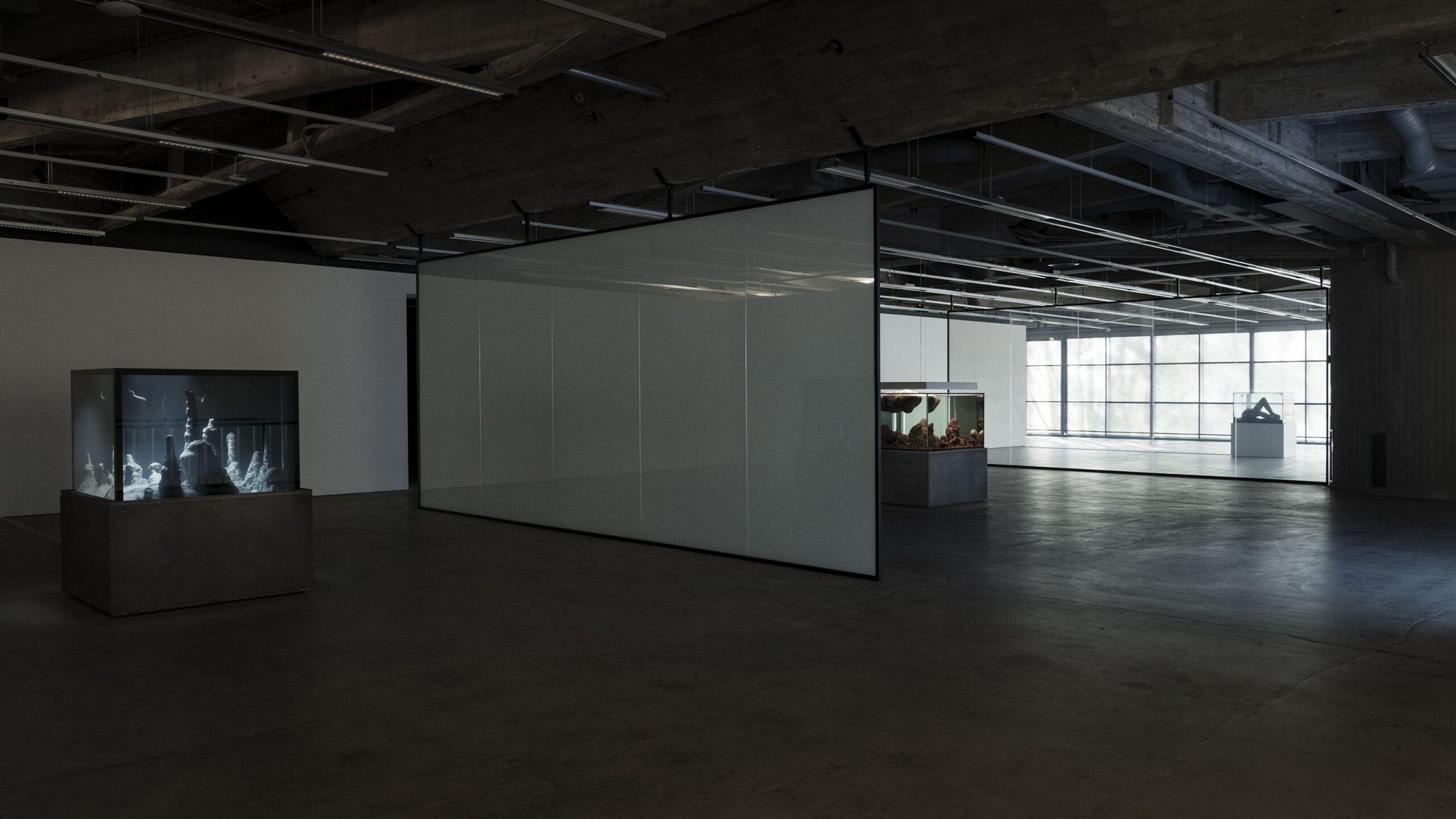
Pierre Huyghe (b. 1962) is an artist who has redefined the format of exhibition and artistic expression for more than three decades. His body of work brings together various interest, among others fiction and philosophy, biology and neuroscience. It combines a variety of media with a wide range of intelligent life forms, both biological and technological, that learn and evolve in unpredictable ways. The enduring questions revolving around the constitution of reality, of self, and knowledge, and the speculation on other-worlds, are some of the key subject matters of his practice.
The exhibition is conceived as an assembly of works from the past decade: films as well as aquariums separated by glass walls that intermittently switch between opacity and transparency, triggered by the surrounding artworks and unpredictable external conditions.
For Pierre Huyghe, the exhibition ritual is not an asymmetrical experience but a sensory encounter with a sentient milieu that perceives and always generates new possibilities of co-dependence between events or elements that may unfold. It is the manifestation of another subjectivity, whether non-human or inhuman, that self-organises and transforms.
The title of the exhibition, Chimeras, refers to organisms composed of cells with more than one distinct genotype. Huyghe uses Chimeras as a concept to describe non-binary existence.
Pierre Huyghe: Chimeras is part of the InCollection series of collaborative exhibitions co-produced by EMMA and Saastamoinen Foundation. Huyghe is the sixth artist to be featured in this invitational series, in which a new piece is commissioned annually from a visionary contemporary artist.
Map of the exhibition
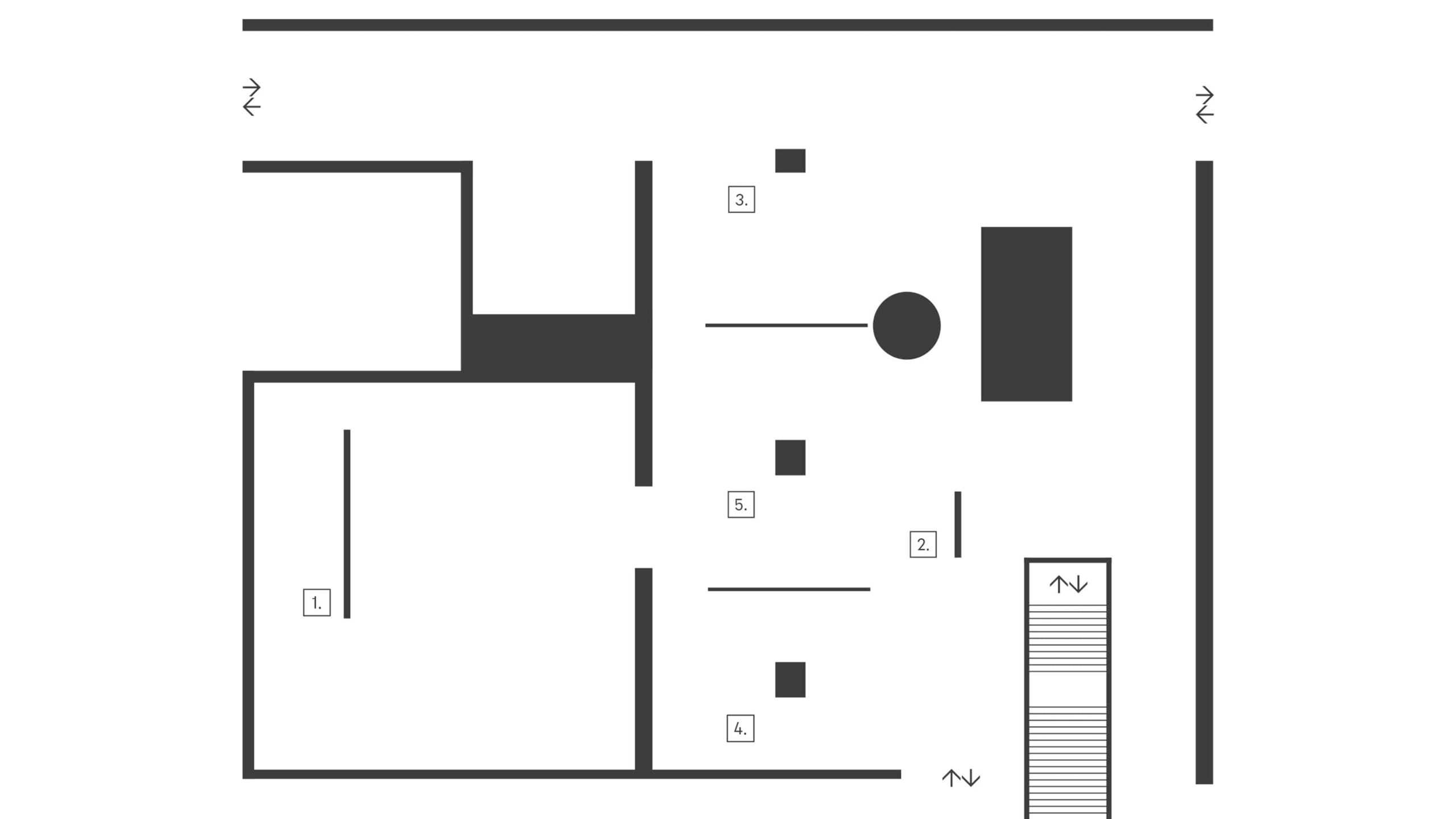
1. Untitled (Human Mask)
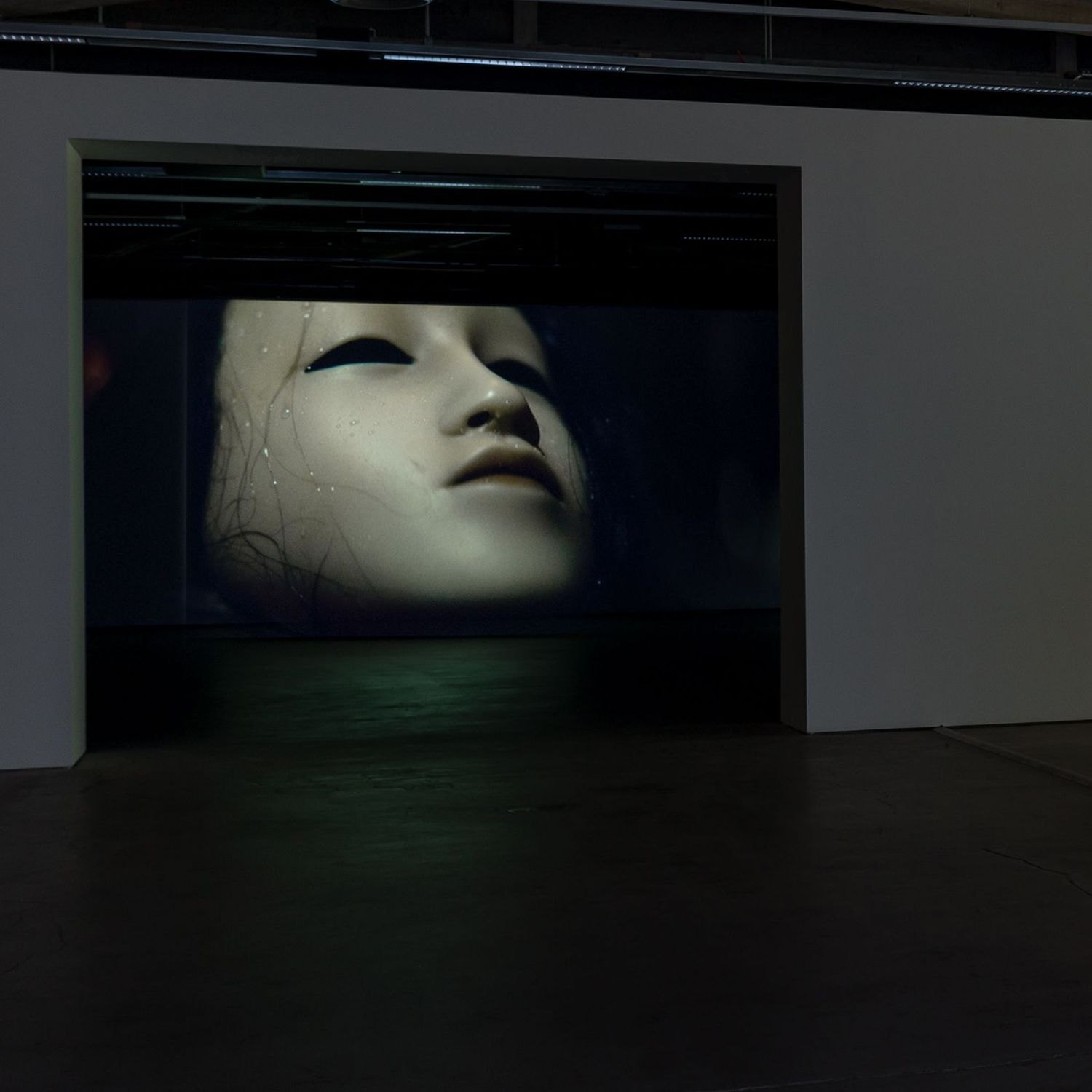
The film opens with footage of the deserted site of Fukushima, the drone camera scaling the wreckage. This is followed by scenes of a monkey wearing a mask of a young woman, alone in an empty restaurant. The monkey, trained as a servant, and a drone, an unmanned camera programmed to perform tasks, inhabit the landscape of Fukushima. It was the site of a powerful earthquake and dramatic tsunami in 2011, which were followed by a nuclear disaster.
Left on its own, the monkey executes the gestures it has been trained to do like an automaton, in a pointless pattern of repetition and variation. The monkey is trapped inside a human representation and has become its sole mediator. It is endlessly waiting, subject to boredom, left between instruction and instinct.
Untitled (Human Mask)
2014
Film, color, stereo sound
Duration 19 min
Courtesy of the artist, Hauser & Wirth and Anna Lena Films
2. Of Ideal
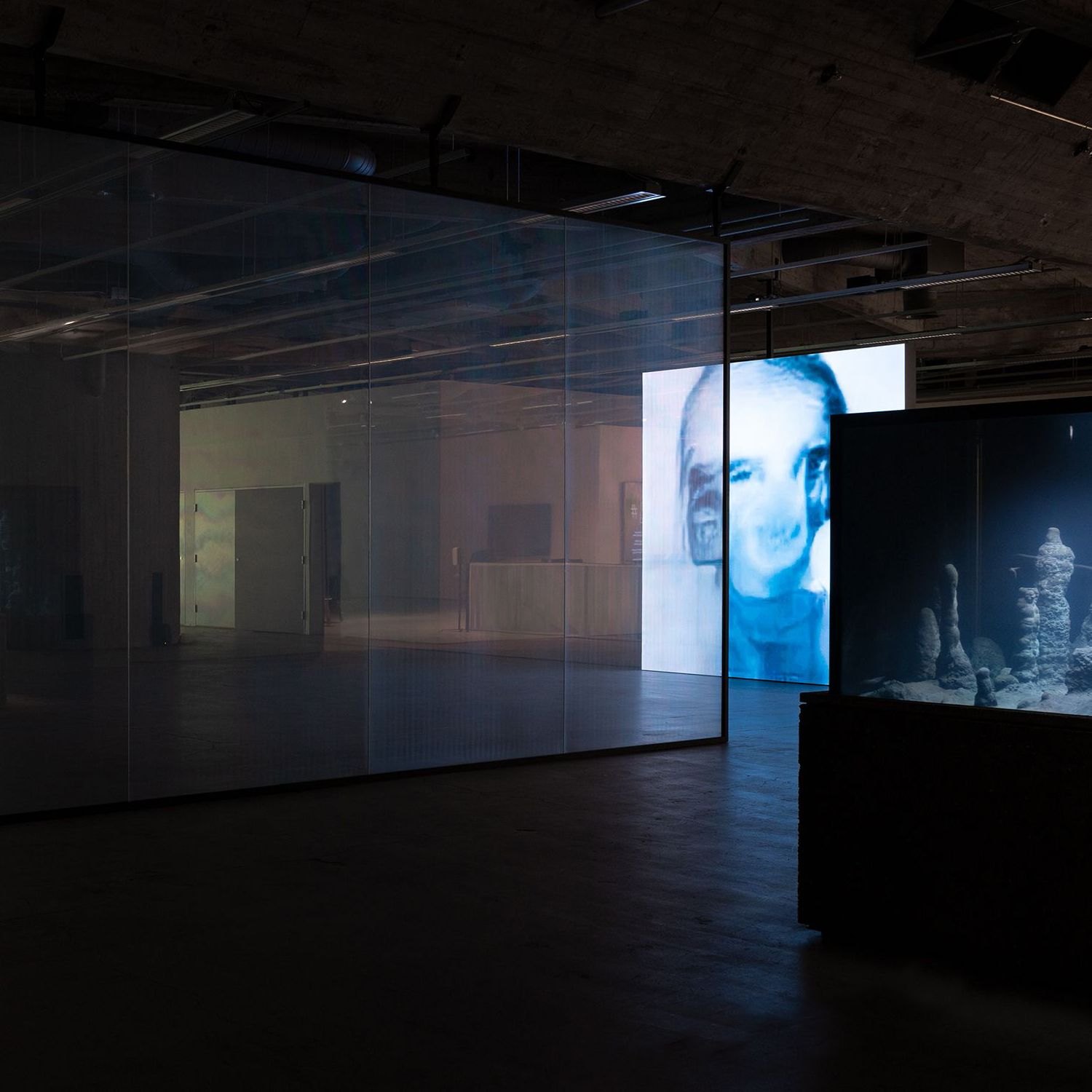
Of Ideal is a collective production of imagination between two types of intelligence, human and artificial. A person’s brain activity is first captured as the subject imagines a specific situation they have been asked to think about. An artificial neural network then tries to interpret the brain activity against a large data set of images. The resulting image is a deep image reconstruction from a mental image. The attempts of the artificial neural network to recognize mental images as a process rather than an end result are presented here as raw material on LED screens. New images are being constantly regenerated, triggered by the surrounding artworks and unpredictable external conditions. Sounds from recorded brain waves are dispersed through the space.
Of Ideal
2019-ongoing
Deep image reconstructions, real-time generated reconstructions, led screens, sound
Courtesy of the artist, Marian Goodman Gallery and Hauser & Wirth
Copyright: Kamitani Lab / Kyoto
3. Abyssal Plain
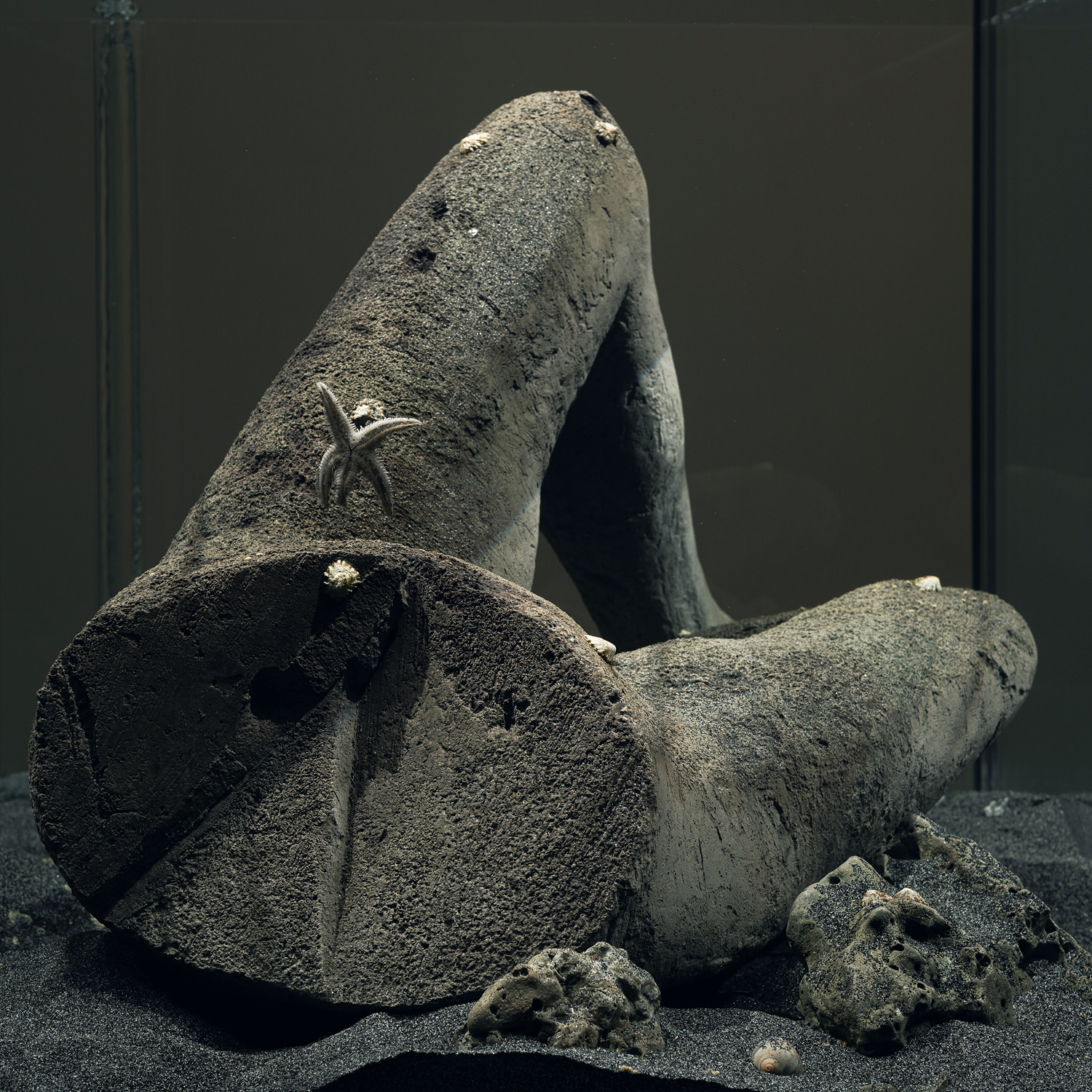
In 2015 Pierre Huyghe planned to sink a concrete stage with various artefacts to be populated with marine life at the bottom of the Marmara Sea in Istanbul. The title of the unrealised work, Abyssal Plain, Geometry of the Immortals, refers to the seabed that covers more than fifty percent of the earth’s surface and yet remains one of the least explored regions of the planet.
The aquarium bears the same name. The above-ground Abyssal Plain includes crushed shells and small rocks taken from the Marmara Sea.
As the centerpiece of the aquarium lies a cast of the lower half of a reclining nude figure, introduced originally at the documenta 13 art exhibition in Kassel, Germany, as part of Huyghe’s famous work Untilled. The concrete sculpture is a replica of a 1930s work by Swiss sculptor Max Weber, which Huyghe transformed in Kassel by replacing the head with a living beehive. Here another enigmatic replica of the lower half of the same sculpture is inside the living ecosystem of the aquarium.
We have observed some anomalies in the water conditions in the aquarium of Abyssal Plain and have removed the starfish from the artwork as a preventive measure. We are investigating the situation. The starfish have been given a new home.
Please find more information about the maintenance of the aquarium works below.
Abyssal Plain
2015
Live ecosystem, aquarium, concrete cast of reclining figure
The Saastamoinen Foundation Art Collection / EMMA – Espoo Museum of Modern Art
4. Circadian Dilemma (El Día del Ojo)
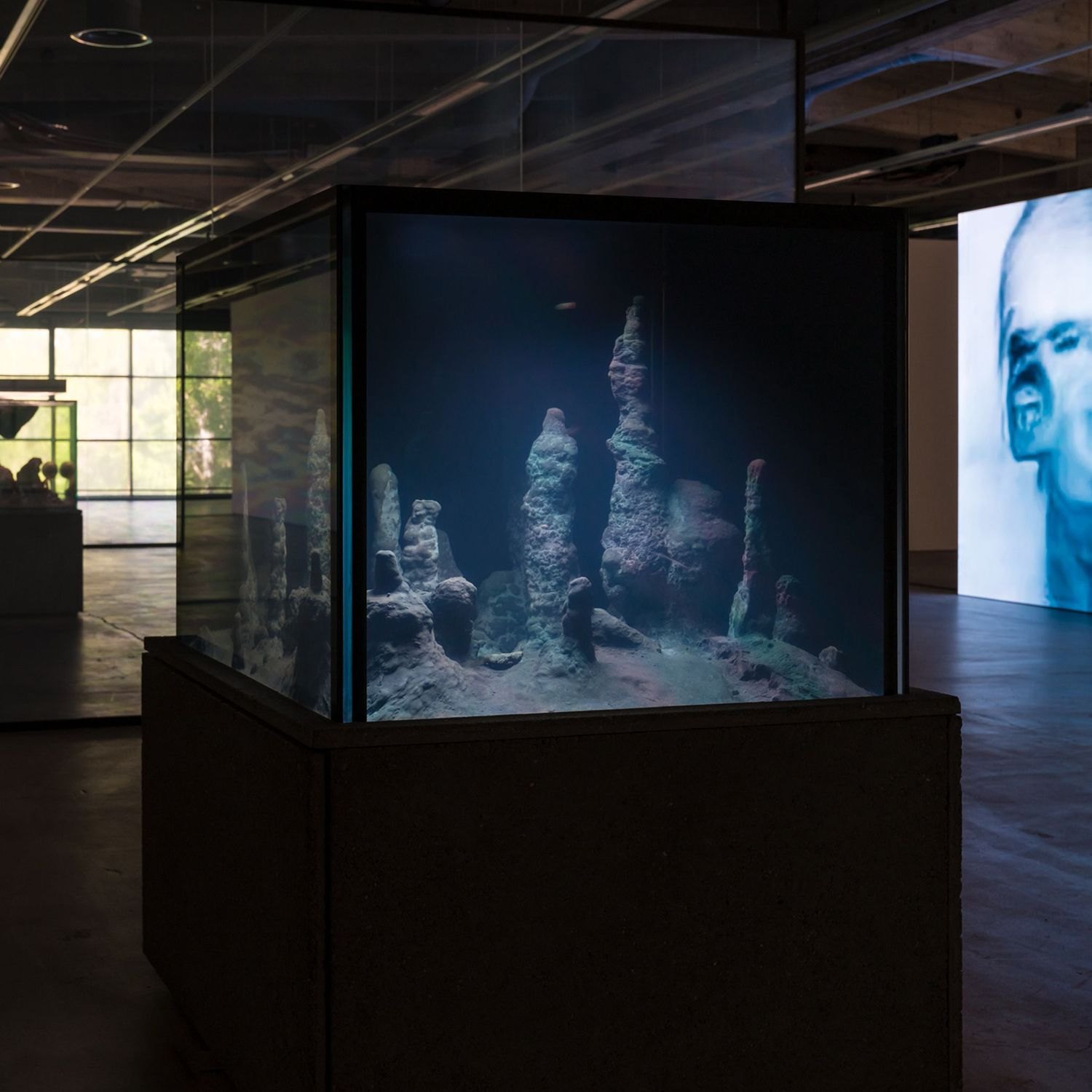
The landscape of the aquarium, inhabited by Mexican and Buenos Aires tetra fish, is modelled on Mexican underwater caves. Tetra fish entered the dark caves millions of years ago and slowly lost the ability to see.
The title of the work refers to the circadian rhythm, the 24-hour cycle that has been observed in animals, plants, fungi and bacteria. This cycle mutated in the cave fish, and the gene linked to vision was switched off. The biological clock of the blind cave fish also changed; its circadian rhythm increased and no longer followed the twenty-four-hour rotation of the earth. In the aquarium, there are blind tetra fish and tetra fish that can see. Thus there are two circadian rhythms present, like two parallel realities.
The switchable glass of the tank reacts to its environment. The liquid crystal in the glass allows it to be transparent, black or opaque. A program based on outside data related to local climatic conditions, such as temperature, precipitation and air pressure, determines the appearance of the glass panels.
Circadian Dilemma (El Día del Ojo)
2017
Aquarium, Astyanax Mexicanus: eyeless and with eyes, algae, cave scan cast in concrete, black switchable glass, geo-localized program
Private Collection, Germany
5. Zoodram 6
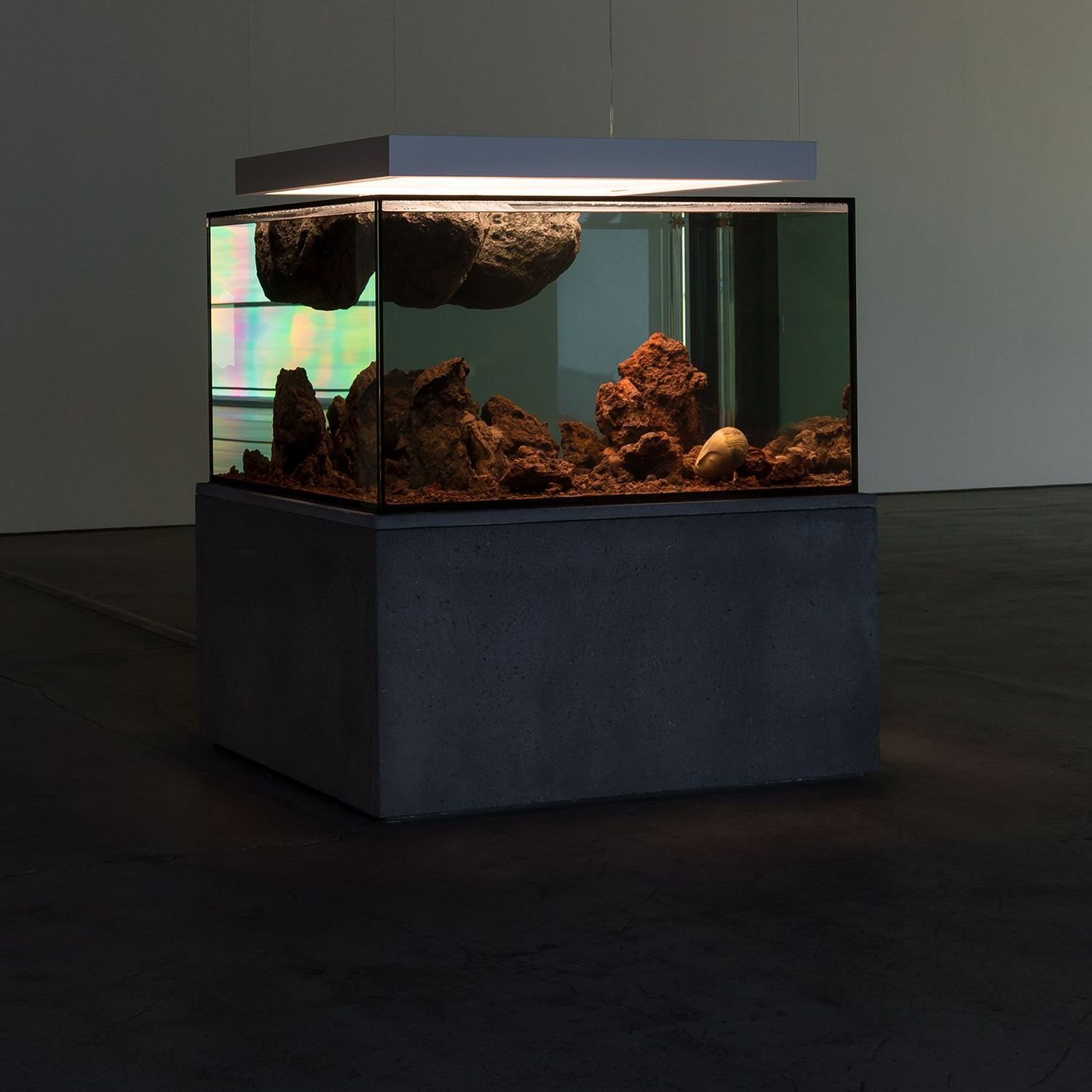
Zoodram is neither the reproduction of a natural ecosystem nor a set but a world in itself which is evolving, as a kind of self-generating organism. The conditions in the aquarium are constructed, yet what unfolds remains uncertain. The animals were chosen according to their behaviour, abilities and appearance, which may change over time.
In the Zoodram 6, there is a hermit crab living inside a replica of Constantin Brâncusi’s famous sculpture Sleeping Muse (originally 1909–10). The crab and the muse’s head embody the encounter of two species, non-human and human. According to Huyghe, aquariums are somewhat like museums: they are places of accumulation and separation in which people observe elements selected from the world around them that belong in nature, similar to museums.
Zoodram 6
2013
Aquarium, live marine organisms, resin shell after Constantin Brâncuși’s Sleeping Muse (1910)
Staatcliche Museen zu Berlin, Nationalgalerie, 2015 purchased by the Freunde der Nationalgalerie
A word from the curator
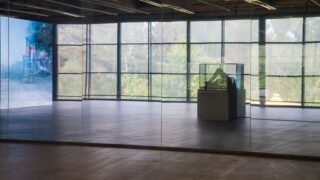
To select subtitles, please click the cc button in the video player’s toolbar.
Maintenance of aquarium works
The exhibition features live animals: starfish, crabs and fish. Animal welfare in the art works is very important to EMMA and to the artist, and work to ensure this was started early in the exhibition’s planning. The conditions in the aquariums are constantly monitored, and the more demanding care is provided by aquarium experts from outside the museum. For day-to-day maintenance, EMMA has received detailed instructions for each individual work.
The exhibition has been granted a permit for animal exhibits as required by law by the Regional State Administrative Agency, which will also supervise the proper care of the animals. In case of emergencies, EMMA has a contracted veterinarian and a plan for the medical treatment and care of the animals. At the end of the exhibition, the animals will get a permanent home that takes into account the typical habitat of each species.
Did you know this about hermit crabs?
Hermit crabs are crustaceans of the decapod order. Some of them live on dry land while others live in water. There are hundreds of species of hermit crab in the wild, and some are also kept as pets. Hermit crabs are characterised by the use of a snail or conch shell or other suitable object to protect their soft abdomen. The crab holds on to the shell with its tail and backmost legs.
As it grows, the hermit crab replaces its protective shell with a larger one. When it finds an interesting shell, it examines and measures the new shell with its claws and legs and if it deems it suitable, it will quickly move into the new one. In Zoodram 6 a hermit crab was offered a mask with an interior designed to resemble a shell. The crab studied it briefly and quickly moved into the new shell. Conch shells and the mask may look heavy, but the buoyancy of water makes the shell feel lighter and the crab can carry it around easily. When it feels threatened, it can retreat inside the shell to safety.